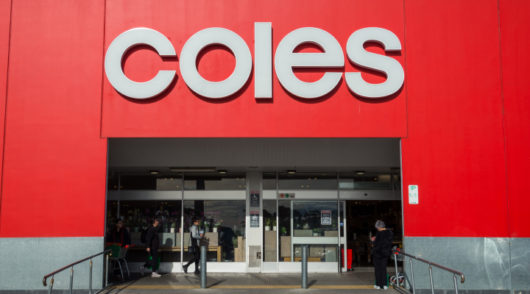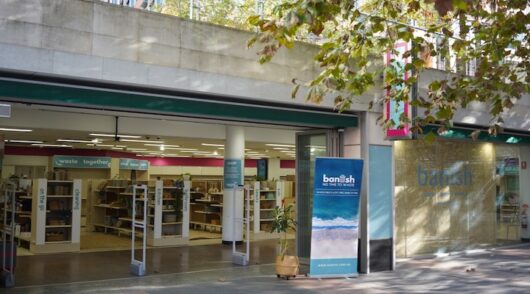Retailers worldwide may be facing challenging times right now, but the evolution of technology – including the deployment of AI – is opening the way to dramatic improvements in productivity at all stages of the retail business model.
As an example, during the past five years, Zebra Technologies has invested US$1 billion in strategic acquisitions of technology companies specialising in both hardware and software. These technologies are helping retailers achieve efficiencies in operational functions including staff deployment and management, customer service, shrinkage reduction and lifecycle pricing.
Zebra Technologies has reimagined its software portfolio under the Workcloud branding, describing it as the world’s first and only purpose-built suite of apps designed specifically for the frontline worker. The Workcloud products fall within four categories: workforce optimisation, enterprise collaboration, demand forecasting and inventory optimisation.
The solutions support Zebra’s hardware strategy which has traditionally centred around creating what it terms ‘the connected worker,’ providing them with the tools to help them get the best out of themselves and the work that they do in stores. The company is renowned for its digitally connected hand-held devices – Touch Computers or Enterprise Tablets – that allow store staff to communicate with colleagues and inventory databases without leaving a customer’s side.
“The future is all about optimising store productivity, lifting employees’ performance and making their job rewarding and enjoyable,” explains Darren Bretherton, regional sales lead software solutions ANZ. “We have consolidated around bringing a unified user experience tailored to leverage the power of the Zebra Touch Computers or Enterprise Tablets that we are well known for.”
Workforce management tools
For most retailers, their largest controllable expense is their workforce, which should make focusing on getting the best out of them a priority. “A critical component of running stores is scheduling the right person at the right time at the right place at the right cost. And that’s where your Workforce Management systems come into play,” says Bretherton.
Determining how many staff you need on a particular day, assigning them to shifts and then assigning them tasks, and recording their successful completion is helping retailers manage employees and teams – and get the best out of them. Using Artificial Intelligence and Machine Learning features built into the product is making work easier for operations teams to manage these complex tasks.
That combination of Zebra Technologies’ workforce management hardware and software has helped retailers record up to a 6 per cent reduction in total payroll costs following the introduction of the product.
“Millennial workers want to be involved in what’s happening in stores and be given some level of responsibility,” says Bretherton. “They also need clarity around what they need to do. The task management solution ensures those clean and clear instructions are passed on so you get great productivity out of the employee.”
Keeping staff connected on the shop floor
Bretherton says Zebra Technologies’ tablets and touch computers – connected to new-generation communications software – are resulting in an 8 per cent reduction in employee turnover – and a similar rate of improvement in customer feedback scores.
“If you can provide your employees with tools that will help them do a better job based on getting great results with good feedback from their customers, they’re more likely to stick around.”
Salespeople on the shop floor can use these devices to seek a colleague’s assistance in locating a certain size or style of a product instead of leaving the customer alone while the salesperson finds it. That extends the opportunity for the salesperson to build a rapport with the customer and potentially upsell.
“If someone’s spending more time with the customer to upsell, we are seeing some retailers achieve an increase in transaction size of around 5 per cent,” says Bretherton.
“A customer might go in for a new shirt and then the employee might have a conversation around pants as well or about what occasion they are buying the product for – you can have more opportunity to help that customer by engaging with them more.”
Lifecycle pricing inventory management
Zebra Technologies also has products focused on inventory management and Lifecycle Pricing. The software uses AI to help a retailer plan the introduction of new stock into a store and manage the pricing levels across its shelf life. After launch at the optimal price, over time a product will get discounted at different stages of its life before it needs to be cleared ahead of new season stock arriving.
Inventory is the second largest controllable expense and retailers are reporting back an improvement in markdown reduction losses of as much as 50 per cent through using the software to manage planning.
“Rather than rushing to sell something at a lower price, the application can see if there is still demand for this product and perceived value, in which case it can maintain the price level longer. You are optimising the value of that product by discounting at the right time, rather than too early.”
Similarly, the right software can improve inventory forecasting and visibility. “We have products that help with yearly stocktakes as well as regular cycle counts on high-value items that can be coordinated across the entire store network. One of our global accounts can complete an entire store stocktake across 4000+ stores globally within 48 hours and it integrates some auditing and checking functionalities as well to validate the data to ensure accuracy of the count.”
Forecasting is the next big thing
Forecasting demand for new styles and products is another vital tool that retailers can adopt to boost efficiency and sales. Bretherton says AI-based tools can predict upcoming colour or style trends, for example, by monitoring what influencers are talking about on social media and other trends in the market.
“A brand can start its manufacturing process and get on with all the things that need to be done so that it is ready to stack shelves at the right time when customers expect new seasonal products in stores.”
The software essentially helps brands understand what demand will be. “This is particularly helpful for someone bringing a new product to market, where there is no sales history.”
Reducing shrinkage with smart loss prevention tools
Zebra Technologies also has a loss prevention tool that analyses sales transactions, and inventory levels across stores, identifying any anomalies and sending recommendations for investigations to loss prevention teams who can then focus on specific high-value loss incidents. It can spot if a cashier is discounting more than other employees, or if their level of returns or refunds is higher than the store average.
“You are making sure that you are optimising the use of all of your inventory as well as maintaining visibility around where it is, and giving the loss prevention team some visibility into what’s happening in the store.”






